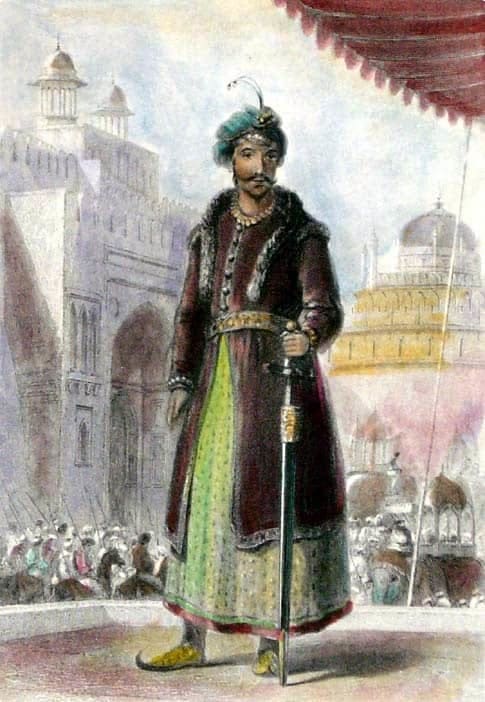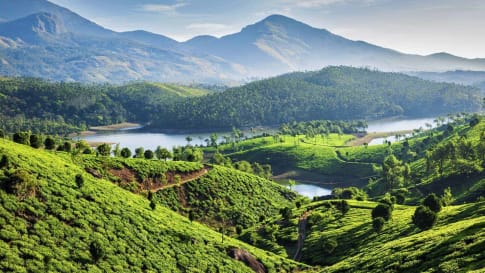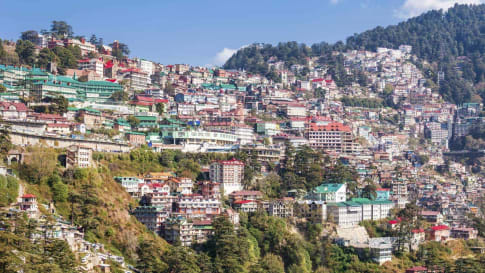The History of India: The Definitive Guide for Travellers
History of British Rule in India – learning for travellers This article will provide a brief overview of the several wars that were fought in India at the end of the Mughal empire that transitioned…
12 Jun 19 · 9 mins read

History of British Rule in India – learning for travellers
This article will provide a brief overview of the several wars that were fought in India at the end of the Mughal empire that transitioned the country into British control.
The British Conquest of India
Toward the end of the Mughal empire’s existence, the British found themselves at the crux of an opportunity to assume control of the trade industry developing in India, and by extension, this would transform into control of the territory itself in the form of a British colony. British historians of the time as well as reports from the British East India Company, framed their crusade for trade power in a favourable image, stating that the Indian political climate because of the Mughal’s absence, “sucked [them] into the power vacuum” (Keay 2000, p. 383). But since then, historians have repainted this image to reflect the global imperialism that motivated the East India Company and the British Empire to further their control by creating anarchy so that intervention was necessary (Keay 2000, p. 411). This article will provide a brief overview of the several wars that were fought in India at the end of the Mughal empire that transitioned the country into British control. For additional context about Indian history and specifically the Mughal Empire, have a read of our previous article on the clash between the Mughals and the Marathas, during which the British first began positioning themselves for exclusive trade rights and eventual colonisation.

In the decades that followed the leaders of the Bengal province set up fair trade with the British, Dutch and French simultaneously. From 1710, when the British East India Company was granted trading rights in the form of a farman granted by Emperor Furrakhsiyar, the Company maintained a stronghold in Calcutta. Trade flourished until Siraj-Ud-Daula became the Nawab. Siraj was determined to keep profits in his administration’s hands, as he discouraged relations with European traders and even with the high-level officials from his predecessor’s administration. In 1756, Siraj attacked Fort William in Calcutta and successfully regained control of the coveted trade city. The British East India Company was not willing to loose the trading rights that they profited from for nearly half a century, so the situation became an armed conflict. Two hundred days of fighting later, Robert Clive led an army to victory over Calcutta once more and their farman was reinstated. But this retaliation for Calcutta was not confined to regaining the city, and they widened their influence in the Bengal province. The British used the Seven Years’ war that ensued as the perfect cover for their expansionist ambitions (Keay 2000, p 381). Clive and his subordinates continued their march onto French-controlled Chandernagore.
Seven Years’ War (1756 – 1763)
The Seven Years’ War was a conflict that involved all of the greatest powers in Europe and spanned the globe. France, Austria, Saxony, Sweden, and Russia formed one alliance and opposing them were Great Britain with Prussia and Hanover; it was France and Great Britain who headed the war. The Anglo-French conflict was largely played out in North America and India for resource control. The British navy was superior to the French and they defeated several French bases, including Pondicherry (Puducherry), India in 1761. The British allies won the war and as a result, gained Canada and India as colonies. In India, this meant that they held a monopoly over the highly fertile and exotic lands for trade to Europe. This did not, however, mean that they had full control over India yet. Following this international dispute, several wars resulted from Mughal and Maratha revolutions against British domination.

Siraj regrouped his army after defeat at the hands of Clive and took a defensive stand at Plassey and waited for the British to arrive. However, his commander-in-chief, Mir Jafar, had his own aspirations of becoming Nawab and betrayed Siraj by providing intelligence to the British. He took up leadership and paid the Company officers a handsome fee in exchange for their agreement to support his Nawab-ship and not to impose on his government administration. Even with Mir Jafar on their side, the British were heavily outnumbered (3,000 to 50,000) and Siraj was supported with artillery from the French. Victory for the British seemed hopeless; yet, the Battle of Plassey began. As luck would have it, the British turned the tables once the rain hit as they came prepared to protect their gunpowder from being dampened and rendered useless, whereas Siraj’s army did not. Thereafter, the Battle was swiftly won by the British, as mass-casualties forced Siraj to retreat.
As promised, Mir Jafar divvied up large amounts of the Bengal treasury to Clive and other important Company officials, totaling approximately £1,250,000. But even more valuable than money, Mir Jafar provided the British with revenue rights in the city and its surrounding area (Keay 2000, p. 390). With these rights, the East India Company had all but cornered the market in saltpetre (used for gunpowder), indigo, opium, and domestic sea-salt (Keay 2000, p. 391). The British were less keen to maintain their side of the bargain, because they wanted the Nawab to be a mouthpiece to the people while they still controlled the administration. They simply had the Nawab replaced when he didn’t comply. They organised a coup of Mir Jafar in 1760, by which his son-in-law, Mir Qasim, was put in his place.
Despite support from the British to be placed in his position, Mir Qasim also did not want to be a mere figurehead when the British were actually pulling the strings. He developed ambitions to expel the British from his territory and went head to head with them on a number of occasions. In addition to this imposition on Nawab sovereignty, some say that this conflict was exacerbated by the increasing expansionism on Britain’s part, which was negatively impacting India’s economy through ‘trade abuses’ and ‘plundering’ (Anwar 2015). Mir Qasim created an alliance with other Indian authorities, including then Mughal emperor Shah Alam II, and assembled an army to counter the British. Their army of approximately 35,000 faced the British army of approximately 8,000 under the leadership of Sir Hector Munro at the Battle of Buxar on 22 October 1764. While the Indian army had larger numbers, the British had superior coordination. The battle was handily won in a matter of hours. The Indian alliance broke up, Mir Qasim fled, and the other Indian leaders surrendered to the British.
The Battle of Buxar of was a turning point in Indian history as the British solidified their leadership over Indian administration in Bengal. The British reestablished Mir Jafar to the Nawab-ship in 1764 (Keay 2000, p. 391). They also signed the Treaty of Allahabad on 12 August 1765, which granted Diwani rights over rich Bengal to the British. The agreement was signed by the Shah Alam II, who handed over all of his power to the British to collect taxes directly from citizens of some of the biggest cities as well as handling administration of provincial finances and armies (2014). The wealth gained from Bengal was put into securing other areas of India, including Bombay and Madras. These three hubs created a triangle of control over the subcontinent.

Mysore Wars
The Battle of Buxar had entitled the British to a dominant position in India, with ever-expanding territorial control. However, a number of Indian and European leaders still had stakes in the land and would fight hard to protect their power. This would be the cause for the four Mysore Wars that took place from 1767 to 1799. In contrast with previous battles between Britain and India, including the Battles of Plassey and Buxar, the sultans of Mysore were militarily adept, making battles fierce.
First Mysore War (1767-1769)
- Contributing factors: Nizam Ali, the leader of Hyderabad, decided to instigate a conflict with Haider Ali, sultan of Mysore, in which the British happily agreed to join due to foreseeable repercussions that would occur if Mysore were to continue expanding their territory (Keay 2000, p. 395). Mysore in the area would also prevent Britain from their goal of moving into the Northern Cicars, which would secure their trade route between Bengal and Madras, much of which was under French watch at the time.
- Army Strength:
- British: approximately 7,000
- Mysore: approximately 70,000
- Result: Upon word of the alliance between Nizam Ali and the British, Haider Ali convinced Nizam to shift alliances to his side. The British were wildly outnumbered and Haider sent his son Tipu to defenseless Madras as a show of force. The British signed a peace treaty to end the war in 1769 (Keay 2000, p. 396). The treaty essentially reverted the territories back to the control of whichever side they were before the war started, as if nothing happened.
Second Mysore War (1780-1784)
- Contributing factors: Haider pushed his borders throughout the decade between the First and Second Mysore war, particularly into Maratha territory. In 1780, he then found himself faced with the perfect opportunity to march on Madras because the rivalry ignited between the French and British by the American Revolution meant additional French support and the Anglo-Maratha wars distracting British defenses (Keay 2000, p. 396).
- Army Strength:
- British: Approximately 4,000
- Mysore: Approximately 80,000
- Result: Victory was swift for Mysore in their first attack on Madras, but later British reinforcements came from Calcutta to reclaim the city. It was during this time that Haider Ali died and his son Tipu took over. The French withdrew their support in 1783 following initial peace talks in the American Revolution. In 1784, the Treaty of Mangalore was signed, which again erased all territory changes that occurred during the war, reinstating each side’s position as it was before the conflict started. Tipu developed an extremely antagonistic view of the British, and was also upset with the French for not providing enough support to the war. In the years that followed, Tipu prepared for future clashes by establishing stronger alliances and expanding the economy. In 1785, Tipu contacted Versailles directly and sent a 45-person entourage to France, on Louis XVI’s dime, to establish better diplomatic relations (Keay 2000, p. 397). He also spread word to neighbouring Islamic states about the British plans to completely take over India. To modernise the economy, he collected seeds and agricultural practices to mass produce crops from far away lands, such as France, as well as silk worm farming from Persia (Keay 2000. p. 399). While Tipu’s economy rose, the British East India Company’s profits declined and Britain felt humiliated by Tipu, leaving them rearing for the next opportunity to try to take Mysore.

Third Mysore War (1790-1792)
- Contributing factors: Both signatories of the Treaty of Mangalore did not uphold the agreement: Tipu did not free British prisoners and actively prepared for another war, and the British also set about making alliances for the inevitable third war that would continue.
- Army Strength:
- British: approximately 60,000, including 30,000 Maratha troops
- Mysore: approximately 40,000
- Result: Despite positioning himself closely with France, the French revolution that erupted in 1789 wiped out all chances of France sending troops to join Mysore in war. Whereas Britain had secured domestic support from Nizam of Hyderabad and the Marathas. The British were victorious and Tipu had to relinquish control of approximately half of his territory to the British, Nizam, and Peshwa authorities.
Fourth Mysore War (1799)
- Contributing factors: After Tipu’s defeat in in the Third Mysore War, he returned with a vengeance to make Mysore a strong, independent state once more. Tipu was a loyal supporter of Napolean’s revolutionary French government and gained confidence in having their alliance. On 22 February 1799, British leader Lord Wellesley declared war on Tipu’s army.
- Army Strength:
- British: approximately 26,000 troops, plus 16,000 cavalry from ally Nizam of Hyderabad
- Mysore: approximately 30,000
- Result: War was fought for nearly three months, during which Tipu never surrendered to a peace treaty and died on the battlefield. With the fall of such a strong opposing force, the British successfully gained control of South India.

Anglo-Maratha Wars
The Maratha wars between the British and the Maratha empire overlapped somewhat with the Mysore wars. The First Anglo-Maratha war was fought between 1775 and 1782. The British became involved in Maratha affairs when Raghunath Rao sought to take the Peshwa throne from his nephew and asked the British to assist him to take over in exchange for territory and tax revenues. The British agreed and provided 2,500 soldiers; however, despite their success in overthrowing the Peshwa throne, the government did not agree to sign a treaty with the new emperor. Negotiations were fruitless and war ensued. Despite claiming to have surrendered in 1779 with the Treaty of Wadgaon, the British continued to fight until 1782 with the Treaty of Salbai, under which they were required to return control of all Maratha land. The Second Anglo-Maratha War was fought between 1803 and 1805. Baji Rao became a ‘subsidiary ally’ to the British empire, as he allowed British presence in major cities, including the capital (Keay 2000, 409). The Marathas did not have the resources to continue fighting and the Treaty of Rajghat was signed 24 December 1805. Following the war, chaos broke out in several Maratha-controlled areas because their leaders were left desolate and forced to plunder. The British benefited from anarchy that was created; it became the perfect excuse for further intervention. The British restored order and assumed control of the political landscape. By this point, the entire country became under British rule, either directly or indirectly (Keay 2000, p. 402).
The Company continued near-total control of the subcontinent for more than 50 years. It was in 1858 that India was officially titled a British colony. Throughout the time of the Mysore and Maratha wars, and the large resistance that the British East India Company faced in gaining control of trade and territory, London was not in support of expansion (Keay 2000, p. 395). This is why many of the battles were fought and won quickly, before communications could reach Britain. But, Britain benefited greatly from the territory won. Our next article will explore British colonial India.
Related Tours

23 days
Nov, MarCultural and History Tour of India | Small Group Tour
Visiting India
Small group tour for mature and senior couples and solo travellers to India. Visiting Delhi and the red fort, Jaipur, Agra and so much more over 22 days explore the world of the Mughal.
From A$12,300 AUD
View Tour
15 days
OctNorth East India small group escorted cultural tour
Visiting India
A unique small group cultural tour visiting the North East region of India, this tour was created for seniors travelling as couples and solo travellers. As we journey through the magnificent landscape and culture we stop to explore Darjeeling, which shares history with Bengal, Sikkim, and Nepal, as well as Tiger Hill, where we witness the changing colours of the sunrise in the Himalayan Range.
From A$9,750 AUD
View Tour
11 days
Nov, Mar, OctIndia Short Tour | Small group tour for seniors
Visiting India
A short small group tour for Mature and seniors couples and solo travellers of India and its icons. Bounded by the majestic Himalayan ranges in the north and edged by an endless stretch of golden beaches. India is a vivid kaleidoscope of landscapes, magnificent historical sites, such as the Taj or red fort royal cities, such Dehli, Jaipur , Agra and Madras colourful people, and rich culture.
From A$9,250 AUD
View Tour


